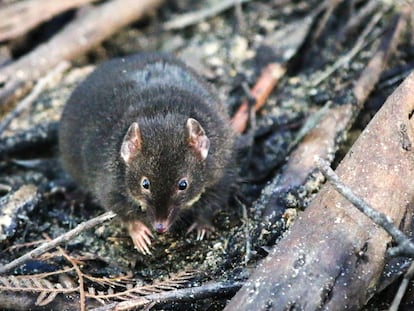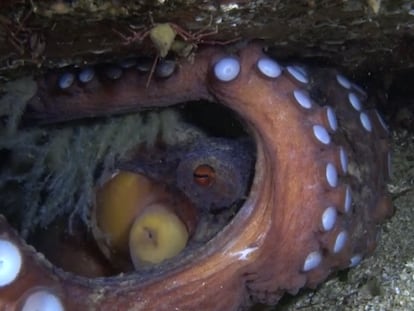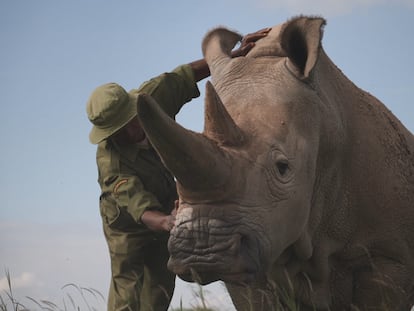This little marsupial will give up sleep to have more sex
During mating season, male antechinuses seek to copulate with as many females as possible, in sessions that last up to 14 hours

Everyone needs sleep. When humans or animals don’t get enough sleep, they may have difficulty paying attention, experience irritability, or suffer from other negative effects. The Australian antechinus, however — a small, mouse-like creature — doesn’t seem to care: this little creature sacrifices hours of sleep to have as much sex as possible.
Over the course of the three intense weeks of the breeding period, the males of this small marsupial species seek to copulate with the greatest number of females in sessions lasting up to 14 hours. Researchers from La Trobe University in Melbourne, Australia, have identified this behavior. They published their findings on Thursday, January 25, in Current Biology.
The 13 known species of the antechinus live mainly on the Australian mainland and on the island state of Tasmania. They have a short lifespan of only 11 months, while males usually die just after mating season. This unusual factor was what attracted scientists to study them.
As catching them isn’t easy, animal science researcher Erika Zaid and her colleagues recorded the movements and metabolic measurements of 450 of these animals, so as to study their sleep routines. They found that, on average, males sacrificed at least three hours of rest each night during the three weeks that females were in heat.
Zaid explains that the urgency of male antechinuses lies in the fact that they’re semelparous — that is, they reproduce only once in their lives. On the contrary, females live twice as long and have more opportunities to reproduce. This means that they don’t want to waste time sleeping and copulating for 12 or 14 hours. They don’t need to look for a mate, nor do they need to store sperm from multiple males. If a female stops sleeping, it’s because of the male harassment she suffers from during the mating season.
To ensure their reproductive success in the sperm contest, males also compete with each other physically, to access as many females as possible. Those who sleep less will be more successful. According to experts, sleep reduction could be adaptive when the need to reproduce “is extreme.”
Death from too much sex?
There are three things that all animals must do: eat, avoid being eaten and reproduce. The ability to meet these goals depends on the amount of sleep one gets, as the functions that rest provides cannot be circumvented. There’s no animal that stops sleeping completely, but there are some — such as the antechinus — that prefer to ensure reproductive success rather than restfulness. The most extreme case is that of the male pectoral sandpiper (a small, migratory bird), which spends up to 15 days without sleeping, also to copulate with as many females as possible.
Lack of sleep, however, takes its toll. After the mating season, male antechinuses develop skin lesions, fur loss and decreased performance while awake, “an effect that worsens night after night,” Zaid emphasizes. Other previous research has proposed that these marsupials live short lives precisely because of this lack of sleep, in what they call “reproductive suicide.” But after this experiment, Zaid’s team doesn’t completely agree about this: “Eight out of 10 survived beyond the mating season, [while] the two who died synchronously were not the ones who slept the least,” the authors say.
Researchers want to learn more about how antechinuses handle sleep loss, which reaches a level that would cause human beings to act as if they were legally intoxicated. “Are [they extremely] committed, so they just keep going?” the researchers ask. “Or are they simply resistant to the negative effects of sleep [deprivation]?”
Unfortunately, after all this effort, the offspring of these marsupials don’t have it so easy. Females are capable of giving birth to up to 18 babies, but since they only have six teats to feed them, only a third of them survive.
Antechinuses aren’t listed as an endangered species, but habitat loss due to human development certainly represents a threat to their survival. The authors of the study warn that it’s very difficult to catch specimens, meaning that the number of animals present in nature today “isn’t close to what was recorded in the 1970s.”
Sign up for our weekly newsletter to get more English-language news coverage from EL PAÍS USA Edition
Tu suscripción se está usando en otro dispositivo
¿Quieres añadir otro usuario a tu suscripción?
Si continúas leyendo en este dispositivo, no se podrá leer en el otro.
FlechaTu suscripción se está usando en otro dispositivo y solo puedes acceder a EL PAÍS desde un dispositivo a la vez.
Si quieres compartir tu cuenta, cambia tu suscripción a la modalidad Premium, así podrás añadir otro usuario. Cada uno accederá con su propia cuenta de email, lo que os permitirá personalizar vuestra experiencia en EL PAÍS.
¿Tienes una suscripción de empresa? Accede aquí para contratar más cuentas.
En el caso de no saber quién está usando tu cuenta, te recomendamos cambiar tu contraseña aquí.
Si decides continuar compartiendo tu cuenta, este mensaje se mostrará en tu dispositivo y en el de la otra persona que está usando tu cuenta de forma indefinida, afectando a tu experiencia de lectura. Puedes consultar aquí los términos y condiciones de la suscripción digital.
More information
Archived In
Últimas noticias
Trump claims peace in Ukraine is near, but Moscow suggests otherwise
A survivor’s account of the Interoceanic Train accident: ‘We were scared because of the speed on the curve’
The Interoceanic Train, the Mexican alternative to the Panama Canal
What is known about the Interoceanic Train derailment in Oaxaca
Most viewed
- Oona Chaplin: ‘I told James Cameron that I was living in a treehouse and starting a permaculture project with a friend’
- Reinhard Genzel, Nobel laureate in physics: ‘One-minute videos will never give you the truth’
- Why the price of coffee has skyrocketed: from Brazilian plantations to specialty coffee houses
- Pablo Escobar’s hippos: A serious environmental problem, 40 years on
- Chevy Chase, the beloved comedian who was a monster off camera: ‘Not everyone hated him, just the people who’ve worked with him’











































